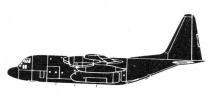Incident Overview

Description
A Dornier 328-110 passenger plane sustained substantial damage in a runway excursion accident at Mannheim Airport (MHG), Germany. There were no injuries among the 24 passengers and three crew members. Cirrus Airlines Flight 1567 departed Berlin-Tempelhof Airport (THF) at 16:30 on a domestic service to Mannheim Airport (MHG). The copilot was Pilot Flying (PF). During the flight the copilot commented that he had difficulties in landing at Mannheim. The captain replied that he did fine. At 17:36 the flight was cleared for a LOC/DME approach to runway 27. One minute later the flight reached the prescribed altitude of 5000 feet. The descent was continued until the PF noticed his error. The captain instructed the PF to arrest the descent and climb back towards 5000 feet. By then the flight had descended to 3800 feet, 100 feet below the Minimum Sector Altitude (MSA). After reaching the Final Approach Fix at 5000 feet, the crew reported that they were established on the localizer. Langen Radar instructed the flight to contact Mannheim Tower. The airplane was configured for the final approach and landing, with the captain telling the PF not to worry several times. The PF attempted to flare the airplane for landing, but the aircraft floated over the runway without touching down. The PF then stated: “Oh – your control”. The captain took over control and replied “My control”. At that moment the airplane was 200 m past the runway threshold. Touchdown was accomplished at 530 m, with 480 m of runway remaining. The airplane failed to decelerate as expected and the captain called for manual braking action. The airplane overran the runway end at a speed of 50 knots. The left hand main gear collapsed as it hit a pothole. The aircraft then slid into an earthen wall and came to rest. There was no fire. Overran runway on landing and hit an earthen wall. One wing and engine severely damaged. CAUSES: The accident happened because: – The aircraft overran the end of the runway and collided with an embankment, – No go-around (balked landing) was initiated, – The throttle, after placement by the PIC (PF), could not be moved into “ground idle” or reverse, – The landing was not aborted after the plane had flown over the touchdown zone, – During the flare for landing the throttles of the engines were not selected to “Flight Idle”, which was not noted by both pilots, – The flight crew flew the approach not in accordance with SOPs, and thereby pushing and even exceeding the limits. The following factors contributed to the accident: – Many non-precision approaches and landings at Mannheim City were not performed according to air carriers OMs, – The TRs and FOIs of the aircraft manufacturer were not incorporated into the OM/B and D of the air carrier, – The practical training of the flight crew by the air carrier was inadequate in terms of preventing an erroneous operation of the throttle control on the basis of the manufacturer of the Do 328-100 issued instructions, – The flight crew conducted a non-precision approach, which did not meet the procedural requirements of the OM of the air carrier and the AIP, – The design of the power lever was not forgiving enough, – The risks of existing problems in the operation of the power levers were not correctly identified and eliminated by by the relevant authorities and the relevant type certificate holder, in spite of several relevant events and various safety recommendations, – The touchdown zone in Mannheim was not marked, – The size and design of the safety area at the end of runway 27 was not sufficient to guarantee the operation of the flight within the safety levels set by ICAO and the legislator.
Source of Information
http://www.skybrary.aero/index.php/D328,_Mannheim_Germany,_2008_(RE_HF)http://www.skybrary.aero/index.php/D328,_Mannheim_Germany,_2008_(RE_HF)Primary Cause
Inadequate ground handling procedures, inadequate pilot training, and a failure to adhere to established SOPs during the approach and landing phases, exacerbated by the pilot’s actions and the aircraft’s design.Inadequate ground handling procedures, inadequate pilot training, and a failure to adhere to established SOPs during the approach and landing phases, exacerbated by the pilot’s actions and the aircraft’s design.Share on:





